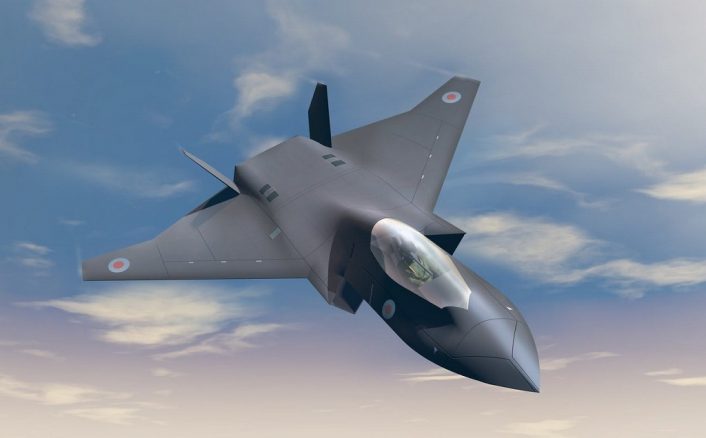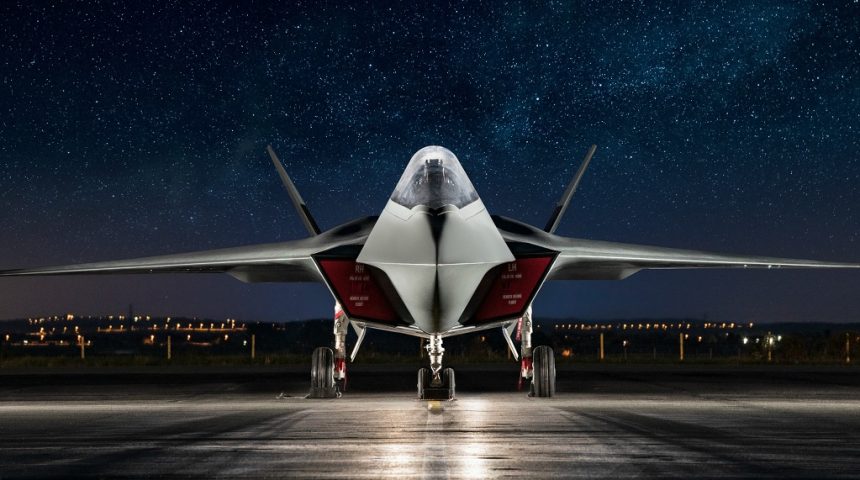Tempest’s new Multi-Function Radar Frequency System will collect and process 10,000 times more data than existing systems thanks to advanced miniaturization and digitalization technologies.
A few months ago, Leonardo revealed to media outlets that the new Multi-Function Radar Frequency System (MRFS), the radar which will equip the Tempest sixth generation aircraft, will collect and process 10,000 times more data than existing systems, or “equivalent to the internet traffic of a large city every second”. The company also said that complete sub-systems have already been built and successfully tested, paving the way eventually to future airborne testing, but did not provide other details.
As you may already know, the Tempest is a trilateral Future Combat Air System effort of Italy, United Kingdom and Sweden, which will replace the Eurofighter Typhoon (in Italy and UK) and the Saab Gripen (in Sweden) beginning from 2035. A number of highly innovative systems are being developed for Tempest, one of which is the MRFS.
Now, a few days ago, Leonardo’s engineers working on the project in the United Kingdom shared some more details during an interview with Defense News, and it looks like that the key words for the new radar are miniaturization and digitalization.
To boost the performance of the new radar, the engineers need to rethink entirely the technology used on today’s AESA (Active Electronically Scanned Array) radars. The basic principle around this technology involves an antenna constituted by a grid of small Transmit Receive Modules (TRM). We could see the TRMs as smaller antennas, which could act individually to create their own radar beam or join their efforts with other modules to create a larger beam.
The grid of TRMs is divided in smaller groups, each of which is assigned to a receiver located behind the antenna, due to their size, where the signal is digitalized before being sent to the processor. Because of this positioning, the analogue signal has to be transferred through coaxial cables, which however cause some data loss in the process. This problematic also applies to the European Common Radar System Mark 2, the radar that is being developed by Leonardo and BAE Systems for the Eurofighter Typhoon fleet of the Royal Air Force.
Here is where miniaturization comes into play. Leonardo is working on miniaturized receivers that can be integrated within the antenna, eliminating the need for a coaxial cable and reducing the data loss. Fiber-optic cables could further reduce the data loss when the digital signal is sent from the receiver to the processor.
“Miniaturized receivers can digitalize the signal within the antenna much earlier in the receive chain,” said the project’s chief engineer Tim Bungey. “Digitalizing the data closer to the array means more data can be received and transmitted, the data can be more flexibly manipulated, and there is more potential for using the radar as a multi-function sensor such as for data linking and for electronic warfare”.

Another advantage of the miniaturized receivers is that it is possible to install more of them, reducing the number of TRMs assigned to each receiver, improving the overall performance of the radar. “To improve performance and flexibility within the system, a key challenge is to divide the TRMs into more groups containing fewer TRMs, handled by more receivers,” said Bungey. “By achieving that, together with supporting wider bandwidths, you can generate significantly more data, giving greater flexibility for beam steering and multi-function operation. We are aiming to increase the number of groups of TRMs, and therefore the number of receivers, beyond what will be offered by the MK2 radar for Eurofighter.”
Following the lead set by the fifth generation of fighter aircraft with the F-22 Raptor and F-35 Lightning II, Tempest will push this concept even more creating a net-centric work environment which combines data-fusion, data-sharing, machine learning and Artificial Intelligence. “The MRFS will be integrated within the wider Tempest Mission System, which incorporates a full suite of electronic-warfare and defensive-aids capabilities, EO/IR targeting and situational awareness systems, and a comprehensive communications system”, said Duncan McCrory, Leonardo’s Tempest chief engineer.
“The data captured by these systems will be fused to create a rich situational awareness picture for the aircrew,” added McCrory. “This information will also be fused with data received from other aircraft and unmanned systems, with machine learning used to combine and process the overall situational awareness picture for the aircrew. This avoids information overload in the cockpit, enabling the aircrew to quickly absorb data and make decisions based on suitably processed and validated information, and rapidly respond to threats in highly contested environments”.
McCrory added that Tempest is being designed human-machine teaming principles in mind, with some aspects of them tested last year. In that occasion, a Manned-Unmanned Teaming (MUMT) trial between an AW159 Wildcat helicopter and a semi-autonomous UAV from Callen-Lenz Associates took place during the Army Warfighting Experiment (AWE) 19 organized by the British Army and the MoD’s Defence Science and Technology Laboratory. The Wildcat crew controlled the UAV from the cockpit similarly to an onboard sensor, with the UAV effectively becoming a detached sensor able to operate closer to area of interest, gathering imagery which was then relayed back via datalink to the helicopter flying at a safe distance.
As was mentioned in other occasions, the development’s focus for Tempest is on the internal systems that it will employing, so the aircraft is not yet in its final shape as it is being designed “from the inside out” and the airframe’s exterior design may change to reflect changes in the internal systems. McCrory further confirmed this, saying that the design of the integrated mission system is proceeding in parallel with the design of the aircraft itself: “We are effectively designing the aircraft from the inside out; by this I mean we are working closely with the MoD to understand future sensing, communications and effects capability requirements, and then working with the Team Tempest partners to ensure the aircraft can accommodate and support the required avionic systems”.
Last month, the Italian Minister of Defense Lorenzo Guerini, the British Secretary of State for Defence Ben Wallace and the Swedish Minister for Defence Peter Hultkvist signed a trilateral Future Combat Air System Cooperation Memorandum of Understanding, covering the cooperation for research, development and joint concepting of the Tempest with the goal of obtaining an equal participation of the signatory countries in the activities related to programme, with positive effects on each own defense industry, small and medium enterprises, research institutes and universities.
The Tempest programme is currently among the priorities of the three governments, which are now working to obtain a widespread industry participation to bring the best expertise to work on the many technology demonstrations currently in progress, while looking at the Project Arrangement and the beginning of the Full Development phase from 2025.









